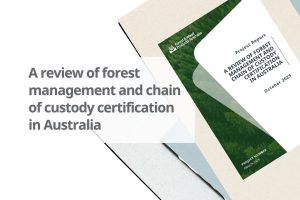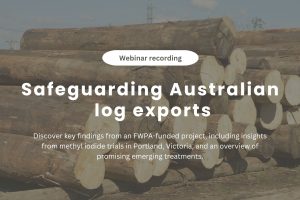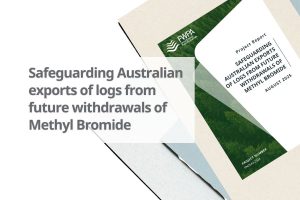A commitment to new technologies for productivity and safety
Manufacturing company Timberlink has continually optimised its processes and looked to future industry trends at its Bell Bay, Tasmania and Tarpeena, South Australia sites.
Both premises have received major upgrades in the past few years. The company has invested $90 million into the Tarpeena site, leading to the installation of a new stacker and edger, complete with leading-edge technology, as well as additional contraflow and batch kilns for more effective timber drying.
The Tarpeena green mill has installed a second sawline alongside the existing sawline, with state-of-the-art mechanical equipment including a bandsaw complete with thinner blade for less sawdust per cut, and a shape sawing gangsaw, which allows for maximum log recovery thanks to its ability to follow the compound curves in the cant (essentially a portion of log sawed on all four sides).
The improved technology of the new saw line can optimise for individual logs, and allows for better control of the line itself, including speeds optimised for throughput and more precise scanning of materials.
Tarpeena will also be home to a new cross laminated timber (CLT) and glue laminated timber (GLT) plant, scheduled to open in 2023. While CLT and GLT are not yet widely used by the Australian construction industry, research suggests this will be a rapidly growing market in the near future.
Timberlink Technical and Sustainability General Manager Trevor Innes commented, “We think there’s a real sweet spot for CLT in mid-rise construction, and there’s going to be a good market for projects in multi-residential and student housing. Buildings that are currently being constructed using steel and concrete are a natural home for this product. There are many benefits from building with CLT… it’s quicker to go up and makes for a safer and quieter worksite.”
Meanwhile Bowen-owned Timbertruss is leading the way in prefabrication, thanks to its automated production lines.
As part of its processes, pre-production plans are sent to the factory floor, where automated machines select and place them on a conveyor for cutting, with sensors ensuring they remain on track. This means a human only needs to touch the timber once during the prefabrication process, creating a safer workplace.
Simultaneously, production processes and schedules at Timbertruss are centrally controlled with Mitek software to improve efficiency and minimise waste. This software can be used in the production of a wide range of products including roof trusses, wall frames, posi struts and flooring cassettes. The technology is sophisticated enough to allow complex structures to be built to exact specifications.
And while Timbertruss can already build commissioned structures at their premises in Geelong, it is moving further towards on-site installation.
A focus on environmental outcomes
There are also plans by Timberlink to build a biocomposite plant at Bell Bay. This plant will use the principles of upcycling to create a line of wood plastic composite products, like decking and screening. The products will be made from 55 per cent wood fibre sourced from plantation mill residues, and 45 per cent recycled polyethene, which will be sourced locally in Tasmania from a combination of high-density polyethylene (HDPE) post-consumer milk bottles and post-industrial waste.
“We’re really excited about the wood plastic composite line. It’s a great way to upcycle what’s currently a low value residue, as well as massively increasing the amount of recycled HDPE in Tasmania. It’s the best environmental solution, and hopefully the best economic solution as well,” said Innes.
“The sawdust is going to be locked into decking that will provide a high-quality upgrade to someone’s house for 25 years or more.”
Over and above this, sawdust and shavings produced in Timberlink mills are being put to other uses including the creation of products like animal bedding. They are also burned to fuel the onsite boilers, which generates almost carbon neutral heat for the kiln drying process, which accounts for more than 80 per cent of energy use onsite.
At the proposed wood plastic composite plant, a combination of renewable energy technologies will provide its energy while rainwater tanks will be installed, harvesting water to be used for cooling in the manufacturing process.
These innovations highlight the value of continued research and development in the industry.
“It is gratifying to see industry members build upon research projects, particularly those initiated by FWPA, as well as their own internal development processes, to achieve improved recovery outcomes and get greater value from their forest and plantation resources.”
“If we’re employing new processes, we lean very heavily on the R&D that’s been completed over the years to make sure we’re getting the best out of those processes,” said Innes.
“What we’re doing is very much on the application side of things. So that’s why it’s amazing to have an organisation like FWPA that helps to coordinate the research on an industry-wide basis.”



